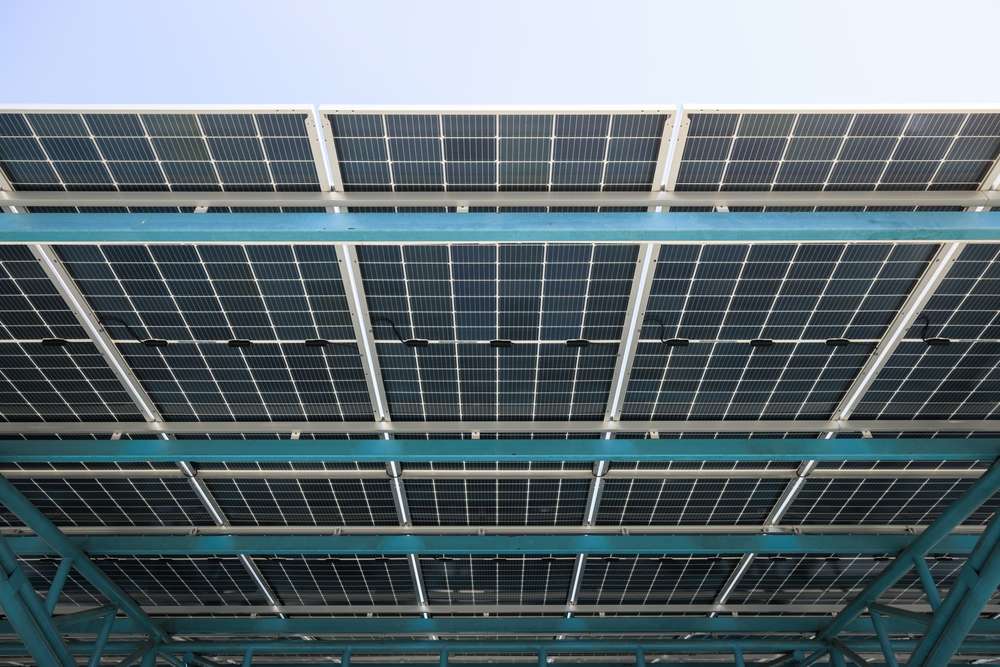10kWh power storage – ideal for single-family homes
Home energy storage systems have revolutionized how households manage their electricity consumption. With a 10kWh battery storage solution, single-family homes can achieve greater energy independence, reduce utility bills, and maintain power during outages. These compact yet powerful systems integrate seamlessly with solar installations, allowing homeowners to maximize renewable energy usage while providing reliable backup power.

The growing interest in residential energy independence has made 10kWh battery storage systems increasingly popular among homeowners. These medium-capacity systems strike an ideal balance between affordability and functionality for typical single-family homes. By storing excess energy produced during peak solar generation hours and releasing it when needed, these systems help households reduce their dependence on the grid while ensuring consistent power availability. The 10kWh capacity is particularly well-suited to average household energy needs, providing enough backup power for essential appliances during outages while offering daily cycling capabilities for regular energy management.
Understanding Home Solar Power System Integration
A 10kWh battery storage solution works most efficiently when paired with a properly sized solar power system. For single-family homes, integration typically involves connecting the battery to both the home’s electrical panel and the solar inverter. This configuration allows excess solar energy to charge the battery during daylight hours instead of sending it back to the grid. When solar production decreases in the evening or during cloudy weather, the stored energy can be automatically deployed to power household needs. Most modern systems include smart energy management software that optimizes this flow based on usage patterns, electricity rates, and weather forecasts, maximizing both savings and convenience.
Home Solar System Cost Considerations
The investment in a home solar system with integrated 10kWh battery storage varies based on several factors. While the initial costs may seem substantial, federal tax incentives, state rebates, and utility programs can significantly reduce the overall expense. The solar panels themselves typically account for about 50-60% of the system cost, while the 10kWh battery storage component adds approximately $5,000-$10,000 depending on the technology and features. Installation costs vary by location and home configuration but generally range from $1,500-$3,000 for a complete system. Most homeowners can expect a payback period of 7-12 years, after which the system provides essentially free electricity for its remaining lifespan, typically 20+ years for panels and 10-15 years for batteries.
Choosing the Right Home Energy Storage System
Selecting an appropriate energy storage system requires evaluating several key factors. First, assess your home’s average daily electricity consumption to confirm that 10kWh provides adequate capacity. Consider the battery chemistry—lithium-ion options offer excellent energy density and cycle life but come at a premium price, while lead-acid alternatives cost less initially but require more maintenance and have shorter lifespans. Evaluate the system’s continuous power output (measured in kilowatts) to ensure it can handle your peak demand loads. Finally, compare warranty terms, which typically range from 5-15 years or a specific number of charge cycles. The most comprehensive warranties guarantee both the physical components and the battery’s performance over time, ensuring it maintains at least 70-80% of its original capacity throughout the warranty period.
12kW Solar System with Battery Storage Benefits
Pairing a 10kWh battery with a 12kW solar system creates a particularly effective energy solution for larger single-family homes. This combination provides enough generation capacity to power most household needs while storing excess production for evening use or backup purposes. A 12kW solar array typically produces approximately 40-60 kWh of electricity daily (depending on location and conditions), allowing the 10kWh battery to be fully charged while still providing immediate power to the home. This pairing enables homeowners to achieve 70-90% energy independence in favorable climates. Additionally, many utility companies offer net metering programs where excess generation beyond what the battery can store is credited to the homeowner’s account, further improving the economics of the system.
Solar Battery Storage Price Comparison
When evaluating 10kWh battery options for residential use, several manufacturers offer compelling products with varying features and price points. The table below provides a comparison of popular 10kWh battery storage systems available to homeowners.
| Battery System | Manufacturer | Capacity | Continuous Power | Warranty | Estimated Cost |
|---|---|---|---|---|---|
| Powerwall 2 | Tesla | 13.5 kWh | 5.8 kW | 10 years | $8,500-$10,500 |
| LG RESU10H | LG Energy Solution | 9.8 kWh | 5.0 kW | 10 years | $7,000-$9,000 |
| Enphase IQ Battery 10T | Enphase | 10.1 kWh | 3.84 kW | 10 years | $6,000-$8,000 |
| Generac PWRcell | Generac | 9-18 kWh (modular) | 3.4-6.7 kW | 10 years | $9,500-$18,000 |
| SunPower SunVault | SunPower | 13 kWh | 6.8 kW | 10 years | $10,000-$13,000 |
Prices, rates, or cost estimates mentioned in this article are based on the latest available information but may change over time. Independent research is advised before making financial decisions.
Maximizing ROI from Your Home Energy Storage Investment
To get the most value from a 10kWh battery system, homeowners should implement several strategies. First, take advantage of time-of-use electricity rates by programming the system to charge when rates are lowest and discharge during peak-rate periods. Second, consider enrolling in utility demand response programs, which pay homeowners to reduce grid consumption during high-demand periods. Third, use energy monitoring tools to identify and eliminate phantom loads and inefficient appliances. Finally, maintain the battery system according to manufacturer recommendations to maximize its lifespan and performance. Many homeowners find that combining these approaches can reduce payback periods by 1-3 years while increasing the system’s overall lifetime value.
A 10kWh battery storage system represents an ideal solution for most single-family homes seeking energy independence and resilience. When properly sized and integrated with solar generation, these systems provide the right balance of capacity, performance, and cost-effectiveness for typical household needs. As battery technology continues to improve and costs decline, these systems will become increasingly accessible to homeowners seeking sustainable energy solutions.




